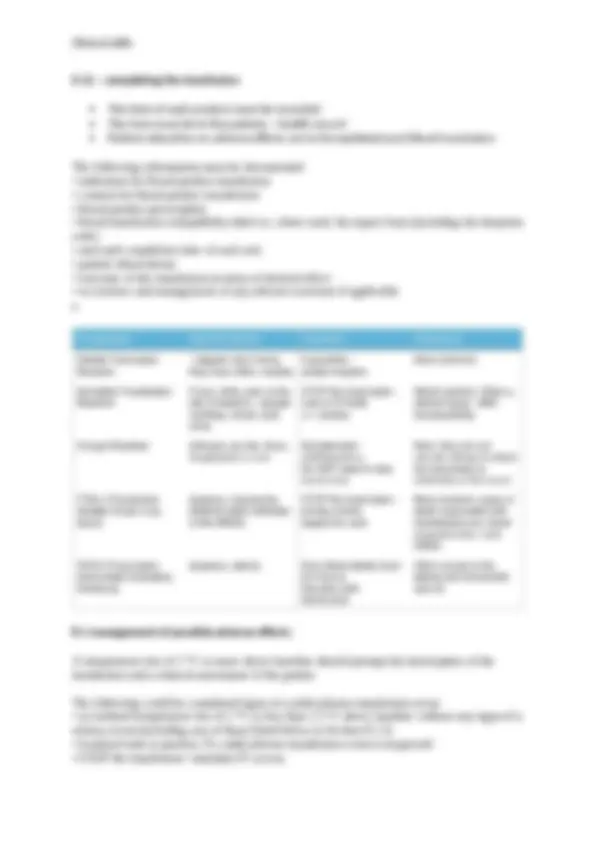





Study with the several resources on Docsity

Earn points by helping other students or get them with a premium plan


Prepare for your exams
Study with the several resources on Docsity

Earn points to download
Earn points by helping other students or get them with a premium plan
Community
Ask the community for help and clear up your study doubts
Discover the best universities in your country according to Docsity users
Free resources
Download our free guides on studying techniques, anxiety management strategies, and thesis advice from Docsity tutors
blood transfusion clinical skill in Australia for nursing student to comply with.
Typology: Cheat Sheet
1 / 5

This page cannot be seen from the preview
Don't miss anything!




Why are you transfusing? Documentation of consent Obtain consent for blood products 3.1 Requirements for blood product prescription patient identification details: family name and given name, gender, date of birth (DOB) and unique patient identification number if available date, timing and urgency of the transfusion appropriate and consistent terminology for the blood product to be administered the route of administration the number of units or dose of blood product to be given, using appropriate units of measure (e.g. number of packs, volume in millilitres, units or weight in grams); blood component volumes should be stated in millilitres for maternity patients (i.e. those <20kg). the duration over which the blood product is to be administered 33 Section 3 Prescription of blood products 16 special instructions; for example, use of a blood warmer, or any medication required before or after the transfusion legibly written name and signature of the prescriber, and a contact telephone number or pager number, and a Medicare provider number, in accordance with health service policies.
When priming and connecting blood administration sets: o the blood product should be mixed thoroughly by gentle inversion before use it is not necessary to prime the blood administration set with anything other than the blood component, although the blood administration set may be primed with 0.9% sodium chloride the manufacturer’s recommendations must be followed when priming the blood administration.
the blood administration sets should not be ‘piggy-backed’ into other lines (see Section 6.6) it is acceptable to attach the set to extension tubing on an IV cannula. When administering blood products through a multi-lumen venous access device, other lumens can be used concurrently for medications and infusion of fluids. Section 6.6 provides further information on coadministration of medications and fluids. 6.2.3 Flushing blood administration sets
6.12 – completing the transfusion The time of each product must be recorded The form must be in the patients – health record Patient education on adverse effects are to be explained post blood transfusion The following information must be documented: